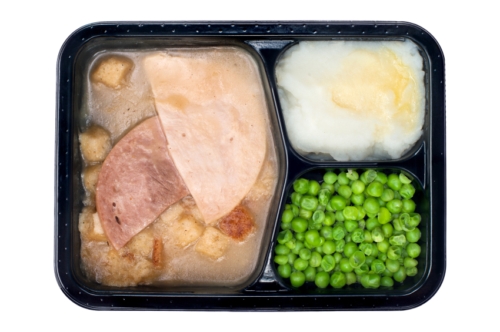 Prevalence rates of many chronic diseases such as type 2 diabetes and heart disease have consistently been on the rise. Public health messages have always focused on the nutrient quality of diet.
Prevalence rates of many chronic diseases such as type 2 diabetes and heart disease have consistently been on the rise. Public health messages have always focused on the nutrient quality of diet.
However, a study recently published in Nutrition, Metabolism, and Cardiovascular Diseases reported that it may not be the nutrient composition of foods but rather the microbial makeup of them.
Recently, evidence has suggested that consuming foods such as processed meat versus unprocessed meat has been associated with increased levels of inflammation as well as increased risks for diabetes and heart disease. The inflammation and risks may result from the production of molecules called pathogen-associated molecular patterns (PAMPs) that are produced through microbes found in your gut.
Rat studies have demonstrated that when their systems were exposed to PAMPs, an immune response resulted in inflammation and insulin resistance, as well as other risk factors. While exposure may have elicited such a response in rodents, it was assumed that these effects would be insignificant upon human exposure. Your gut contains more than a hundred trillion bacteria, with a high amount of PAMPs, but researchers previously thought that their role in inflammation was insignificant.
However, after testing many household items, especially processed foods, the concentration of the bacteria responsible for stimulating PAMPs was higher than what is considered healthy in a rodent; perhaps these are putting humans at risk. Items that were found to have high concentrations were not just highly processed foods but minimally processed ones such as sliced onions stored in a fridge. The longer the item is stored, the higher the concentration of PAMPs.
Researchers in this study further explored whether increased dietary intake of PAMPs caused changes in inflammatory markers, leading to increased inflammation and cardiometabolic risk among healthy people. They conducted two studies: a chronic study and an acute one.
The chronic study included a dietary intervention sampling 11 healthy adult males over 12 days. Participants were requested and educated to avoid high-PAMP foods for the first seven days but could consume as many fresh foods as they pleased. Their options included meat, fish or vegetables, as long as they refrained from mincing or processing these items except right before consumption.
Researchers instructed them that there were no restrictions on salt, sugar, or non-alcoholic beverages, but to refrain from alcohol. For the following four days, researchers provided them with a set lunch and dinner that included high-PAMP content. Participants kept food diaries for the duration of the study and researchers collected fasting blood samples three times during the study.
The acute study was a single-blinded, cross-over study with two dietary interventions over a 24-hour period. Thirteen healthy males volunteered to consume a high-PAMP and low-PAMP breakfasts with a two-week washout period between trials. The meals were nutritionally identical but differed only in PAMP content. Researchers collected blood samples at three points during the 24 hours.
Findings revealed that in the chronic study, leukocyte (white blood cell) levels were significantly reduced during the low-PAMP period but significantly increased upon exposure to high-PAMP foods, indicating an inflammatory response. Furthermore, LDL (bad) cholesterol levels were reduced during the low-PAMP period and again increased during the high-PAMP period. The acute study showed that leukocyte levels were significantly reduced during the low-PAMP meals.
“In essence, we have discovered that contaminating molecules that arise in processed foods from the overgrowth of a specific type of bacteria during refrigeration or food processing can cause our immune systems to overreact in a manner that might be damaging to health when we eat foods containing these molecules,” reported author Dr. Clett Erridge.
By understanding the mechanisms of the growth of these molecules and how consuming processed foods is related to increased risks of heart disease and diabetes, further long-term studies can evaluate the effects of decreasing inflammation and LDL levels. Perhaps this can also provide a method for manipulating how foods are manufactured.
“The present work suggests that removing these molecules from common foods could provide a health benefit to consumers and suggest a potential means of making some of our favorite foods healthier without any appreciable change to taste, texture, cost or ingredients,” said Erridge.
Sources for Today’s Article:
Herieka, M., et al., “Reduced dietary intake of pro-inflammatory Toll-like receptor stimulants favourably modifies markers of cardiometabolic risk in healthy men,” Nutrition, Metabolism and Cardiovascular Diseases, 2015; doi: 10.1016/j.numecd.2015.12.001.
